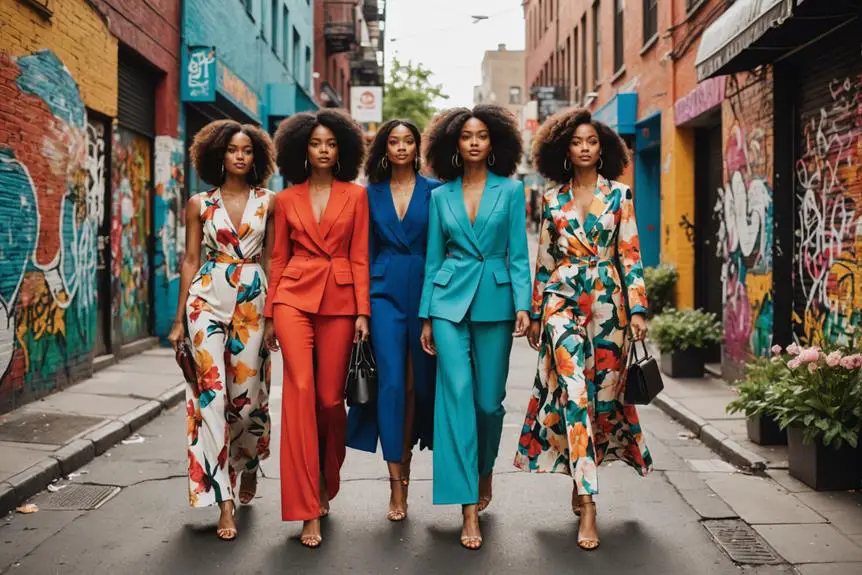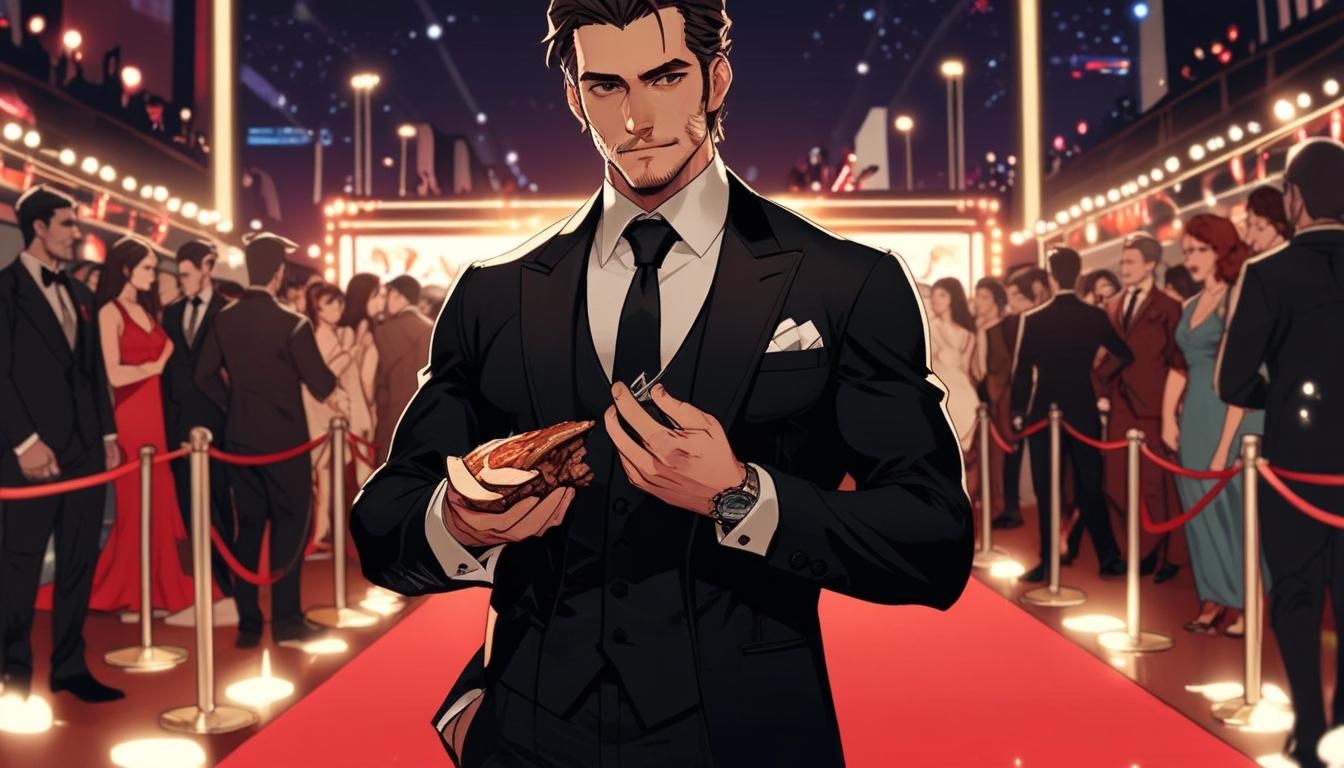Is it true that the fashion of the 1920s was a direct reflection of the social changes women experienced during that time? As you explore the iconic flapper dresses, androgynous styles, and bold patterns, you'll find that each piece tells a story of liberation and modernity. The fabrics and accessories of the era not only enhanced personal expression but also marked a significant departure from the restrictive fashions of the past. Curious about how these trends influenced contemporary style and the cultural landscape?
Historical Context of the 1920s
The 1920s frequently marked a transformative era in women's fashion, as styles shifted dramatically from the restrictive garments of the Victorian age to more liberating designs. Can you imagine swapping those stuffy corsets for something that actually lets you breathe? Women's clothing during this period became all about comfort and freedom of movement. Flapper dresses, with their knee-length hems and dazzling fringes, became the ultimate symbol of this change. They weren't just pretty; they represented a new independence and a break from traditional norms.
And let's not forget the androgynous silhouettes that emerged! Think about the boyish bob hairstyle paired with straight, loose-fitting garments. It was a bold move that challenged what it meant to be feminine. Fashion trends in the 1920s were all about embracing a new identity, and you could see this in the lighter fabrics, like silk and cotton, that allowed women to dance the night away without a care in the world.
Plus, fashion became more accessible than ever. With mass production and ready-to-wear lines, women from all walks of life could immerse themselves in the latest styles. Imagine being able to rock the same flapper look as your favorite movie star! This was a time when clothing wasn't just about appearance; it was a statement of freedom and fun. So, as you explore this exciting decade, remember: it's not just about what you wear but how it makes you feel!
Iconic Styles and Silhouettes
Get ready to explore the fabulous world of 1920s fashion, where flapper dresses brought a revolution to women's style! You'll see how boyish silhouettes emerged, giving women a whole new sense of freedom in their clothing. And let's not forget the accessories and adornments that completed these iconic looks—who doesn't love a little sparkle?
Flapper Dresses Revolution
Flapper dresses transformed women's fashion in the 1920s, marking a bold departure from the restrictive styles of previous decades. These dresses were all about freedom and fun, featuring loose, drop-waist silhouettes that let you dance the night away! Can you imagine ditching those corsets for something so liberating?
The iconic flapper dress often came adorned with fabulous embellishments like fringe, sequins, and beading, adding sparkle to every moment. Hemlines rose to just below the knee, a daring move that reflected women's newfound independence in both fashion and society. Pair your flapper dress with a cloche hat and a long strand of pearls, and you're all set to embody the modern, independent woman of the Jazz Age.
This style of clothing not only changed how women dressed but also influenced cultural movements, as women began to challenge traditional gender roles and assert their presence in public life. So, are you ready to embrace the flapper spirit? Grab that dress, hit the dance floor, and let the world know you're here to celebrate! It's all about expressing yourself and having fun.
Boyish Silhouettes Emergence
In the 1920s, a significant shift emerged in women's fashion as boyish silhouettes took center stage, embracing a more androgynous aesthetic. This was all about breaking free from the constraints of traditional feminine styles. You might've noticed those dropped waistlines and the minimal bust emphasis, right? Iconic styles like the flapper dress featured straight lines and loose fits, allowing you to move freely—perfect for dancing the night away!
The introduction of trousers and shorter hemlines symbolized newfound independence and self-expression, reflecting major societal shifts. Plus, lightweight fabrics like silk and cotton made these outfits super comfortable. It's like your wardrobe was giving you a big hug!
Here's a quick look at some iconic styles and their features:
| Style | Features |
|---|---|
| Flapper Dress | Straight lines, loose fits |
| Trousers | Comfortable, stylish |
| Drop-waist Skirts | Freedom of movement |
| Boyish Blouses | Minimal bust emphasis |
| Jazz Age Fashion | Influenced by music and dance |
This fashion evolution wasn't just about clothes; it was a statement on gender expression in a modern world! Isn't that just fabulous?
Accessories and Adornments
Accessories play an essential role in shaping your personal style and enhancing your outfits, allowing you to express individuality and creativity. Think about it—when you toss on statement jewelry, like chunky necklaces or bold earrings, you instantly elevate your look. You can go from basic to fabulous in seconds! And let's not forget about those oversized handbags. They're not just practical; they're a statement all on their own, giving you that chic vibe while holding everything you need.
Vintage sunglasses, especially cat-eye styles, add a touch of retro charm that's hard to resist. They not only protect your eyes but also make you feel like a star from a classic movie!
Don't overlook statement belts, either. With their bold colors and textures, they can cinch your waist and create that coveted hourglass silhouette. Footwear trends like ankle boots and platform heels can also define your outfit's mood—are you feeling fierce or fun?
Fabrics and Patterns of the Era
The fabrics and patterns of the 1920s transformed women's fashion, making it more dynamic and expressive. You might find it fascinating that this decade introduced lighter fabrics like chiffon and silk. These fabric innovations allowed for fluid silhouettes that danced with every move, a huge shift from the heavy materials of the Victorian era. Imagine twirling in a dress that flows effortlessly around you! Linen also began to gain popularity, with its natural fiber properties contributing to the relaxed aesthetic of the period.
Patterns played a significant role, too. You'd see bold geometric shapes and art deco designs, which reflected the excitement of a new era. The textile evolution didn't just stop there; it sparked creativity in how women dressed. With these vibrant patterns, you could express your personality more than ever before.
As the decade progressed, the influence of fabrics continued to change. In the 1930s, rayon emerged as a popular alternative to silk, making stylish clothing more affordable during the Great Depression. This meant that you didn't have to break the bank to look fabulous!
Accessories and Footwear Trends
A variety of accessories and footwear can elevate your outfits and showcase your unique style. Whether you're heading to class or out for a night with friends, the right pieces can make all the difference. Vintage clothing, especially from the 1960s and 1980s, often features unique accessories that can complement modern outfits beautifully, allowing you to stand out in a crowd with a touch of history. Let's explore some must-have trends that you should consider:
- Sustainable Accessories: Eco-friendly materials are all the rage! From bags made from recycled fabrics to jewelry crafted from sustainable sources, you can look stylish while being kind to the planet. This aligns with the growing interest in vintage clothing and its promotion of eco-friendly fashion.
- Statement Pieces: Think bold! Oversized scarves, chunky necklaces, or unique handbags can really express your personality. These pieces grab attention and show off your creativity.
- Versatile Footwear: You need shoes that can adapt with you! Stylish sneakers can take you from a casual day to a fun night out. And don't forget about those elegant boots that go perfectly with almost any outfit.
- Layering Options: Mix and match your accessories! Layering bracelets or stacking rings gives your look a fun twist. Plus, it's a great way to show off different styles in one outfit.
Cultural Influences on Fashion
Cultural influences shape fashion in profound ways, reflecting societal changes and women's evolving roles throughout history. Think about it: when you look at the fashion of the 1920s, you see how feminist movements pushed for freedom and self-expression. Women ditched those constricting corsets, embracing looser, more liberating styles, as seen in the groundbreaking designs of Alexander McQueen's early collections. It was a bold statement of independence!
But then, economic factors like the Great Depression in the 1930s flipped the script. Fashion turned practical and conservative, as people needed to save money. You couldn't just splurge on fancy dresses when every penny counted! The focus shifted to durability and utility, which was a big change from the previous decade.
Fast forward to the 1940s, and you'll notice wartime fabric shortages leading to military-inspired looks. Women started wearing styles that emphasized functionality—think strong colors and sturdy designs. This was all about making a statement while adapting to challenging times.
Throughout these decades, artistic expressions also played a huge role in shaping fashion. Designers drew inspiration from cultural movements, leading to notable shifts in silhouettes and styles. Every change in fashion tells a story about women's roles and desires, showing how closely linked style is to society.
Legacy of 1920s Fashion
Fashion from the 1920s continues to influence styles today, marking a pivotal shift towards freedom and self-expression for women. This era, often called the "Roaring Twenties," was all about breaking boundaries. You can see its impact in modern fashion evolution, where comfort and flair reign supreme. The emergence of styles like the wrap coats in the 1960s, which built on the foundation laid by the flapper dresses, showcases how women's fashion has continually evolved. So, what made the 1920s so special? Here are a few key elements:
- Flapper Dresses: These iconic styles, with their dropped waistlines and shorter hemlines, celebrated women's newfound independence.
- Light Fabrics: Fabrics like silk and chiffon became popular, allowing for a breezy and relaxed fit that was a big change from the stiff outfits of the past.
- Accessories: Cloche hats, pearls, and fringed handbags weren't just add-ons; they completed the glamorous look of the time.
- Fashion Icons: Designers like Coco Chanel reshaped women's clothing, promoting simplicity and elegance, which still inspires designers today.
The 1920s wasn't just about clothes; it was a reflection of social movements and economic changes. Women were stepping into new roles, and their fashion mirrored that freedom. It's fascinating how these styles still resonate today, encouraging you to express yourself. So next time you throw on that chic dress or those stylish accessories, remember you're channeling the spirit of the 1920s! Isn't that amazing? Fashion really is a time machine!
Frequently Asked Questions
What Is a Women's Size S?
Picture a perfectly tailored outfit hugging your frame; a women's size S typically fits 34-35 inch busts, 26-27 inch waists, and 36-37 inch hips. Remember, size charts and brand differences create fit variations.
What Has Happened to M&S Clothing?
M&S Clothing's faced challenges with competition and shifting preferences. You'll notice M&S trends focus on sustainability, actively incorporating customer feedback to revitalize offerings, streamline operations, and enhance their online presence for a better shopping experience.
What Is the SS Season in Fashion?
The SS season in fashion showcases vibrant color palettes and fresh spring trends. You'll find breathable fabric choices like cotton and linen, perfect for warmer weather, allowing you to stay stylish and comfortable.
What Does S CH Mean in Women's Clothing?
So, you thought "S CH" was a secret code? It's just a size chart shorthand for small and chic. It's about fitting into style trends while feeling fabulous in those trendy fabric types, darling!




